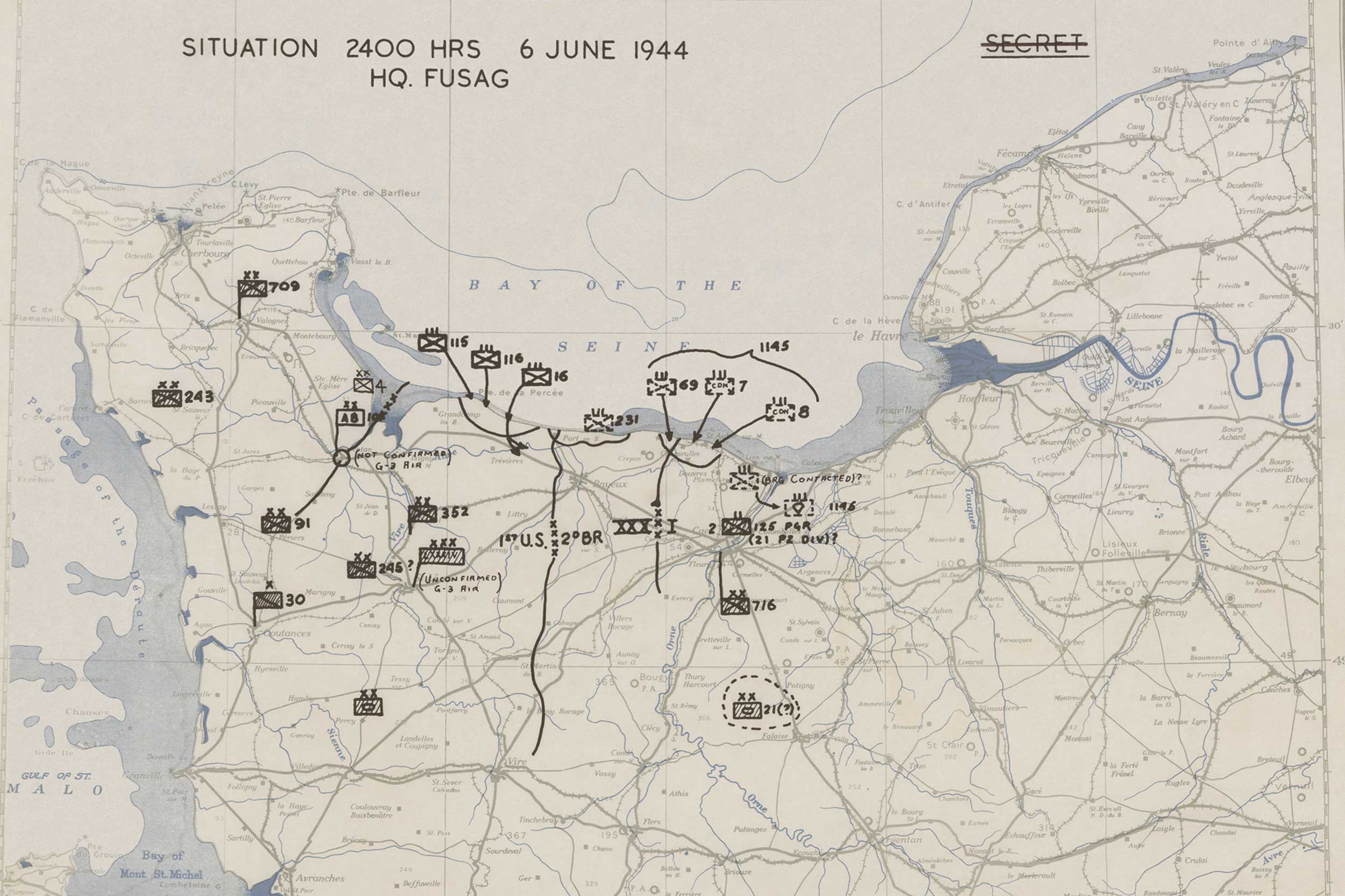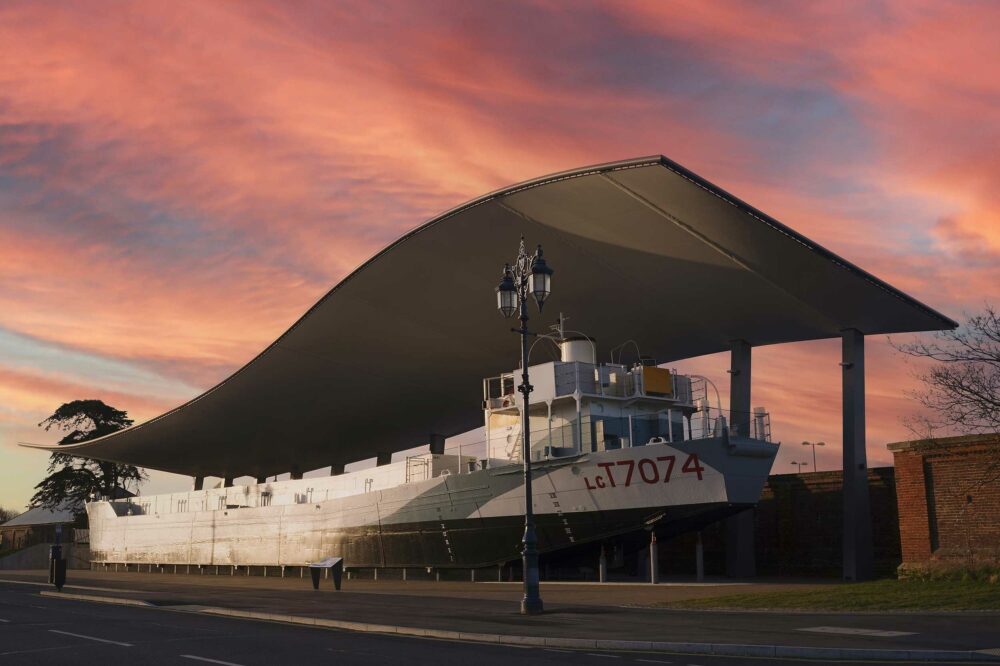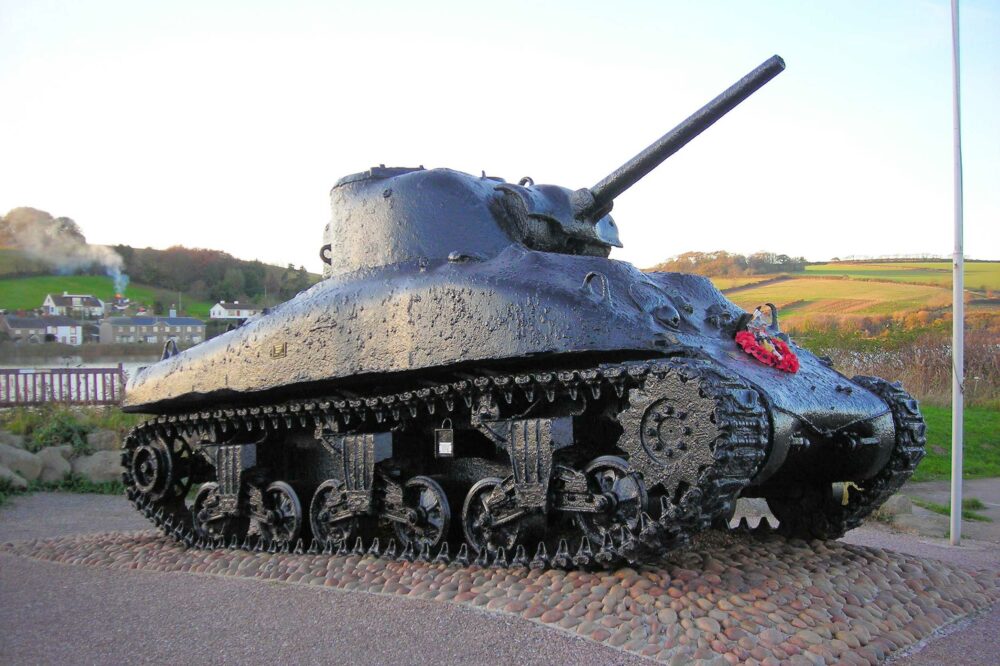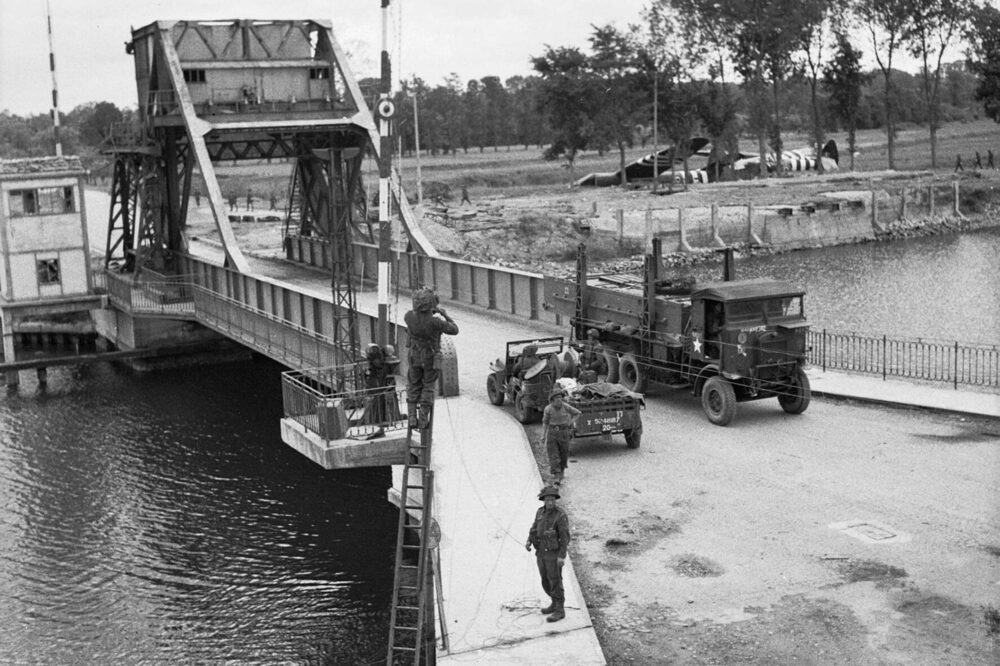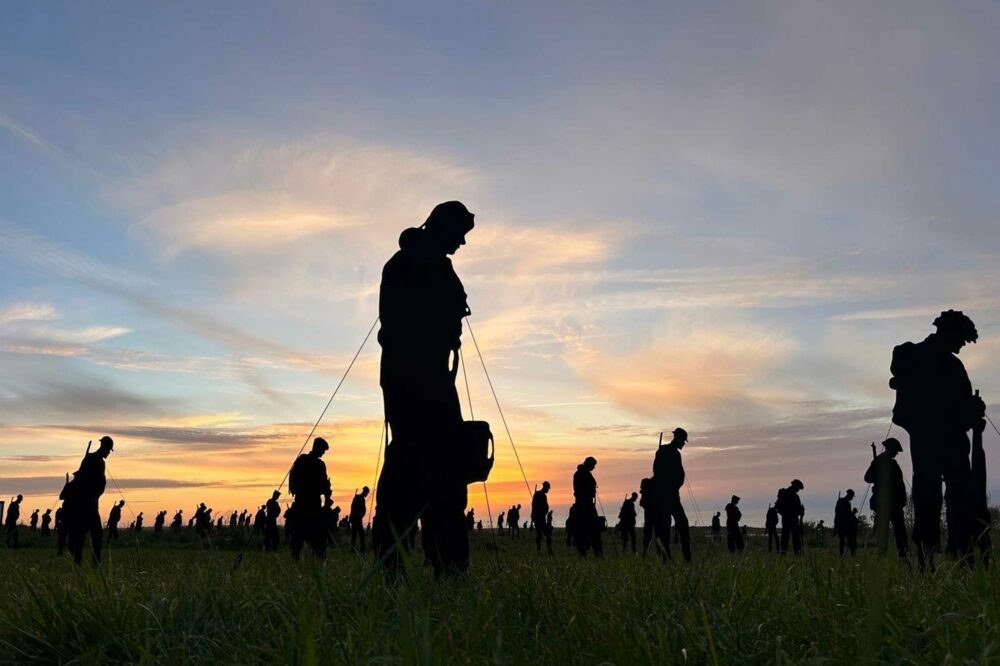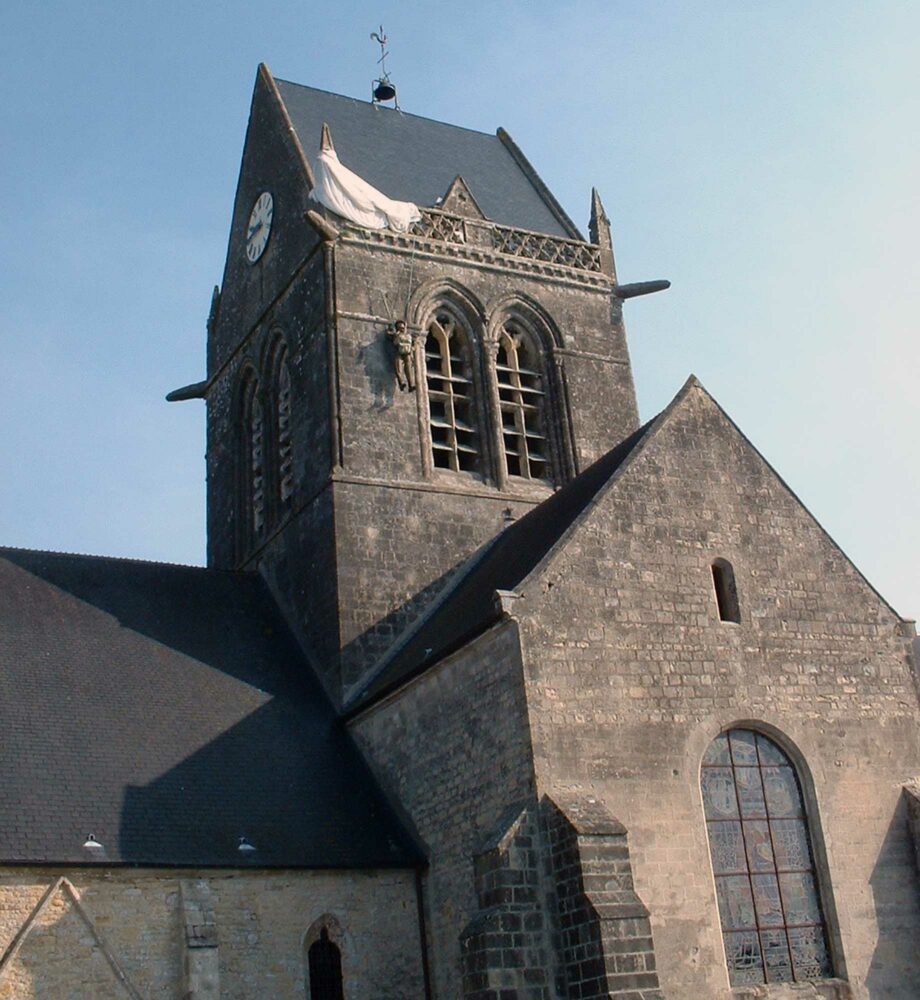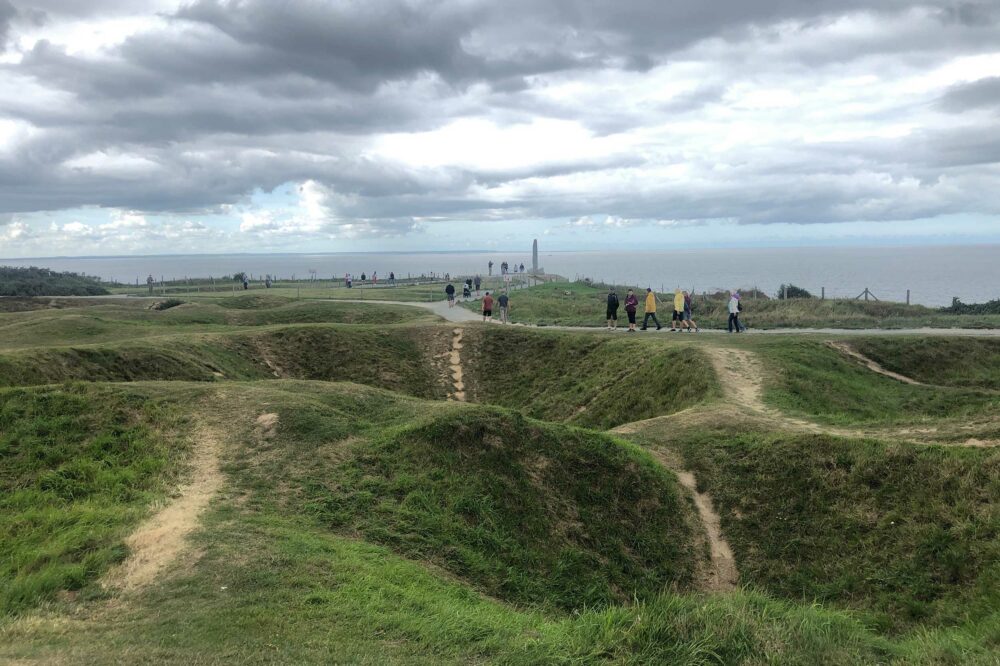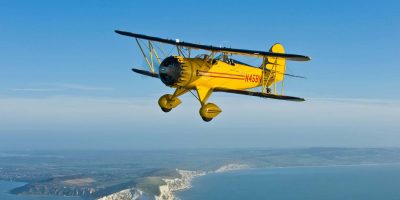Via Cherbourg Manche
St. Mère-Église
At the opposite (western) end of the beachhead it was the task of the US 82th and 101st Airborne to perform a similar interdiction.
Situated near the crossroads of Route N13, a vital artery connecting Utah Beach to the inland regions, St. Mère-Église offered the Germans a potential route for counter-attacks from the large garrison defending Cherbourg itself. Securing the bridges over the Douve River would prevent German reinforcements from hindering the Utah Beach landings.
The night before D-Day, paratroopers of the 82nd Airborne parachuted into the darkness around St. Mère-Église.
The drop was chaotic, the troop carrier pilots, unused to anti-aircraft fire, or indeed any action at all, exhibited many of the symptoms of panic, dropping their troops at too high speed or height, with considerable numbers of the heavily laden troops drowning in the sea or flooded fields.
Famously Private John Steele hung by his snagged parachute from the roof of the town church and dangled for hours before his eventual release and capture. Four hours later he escaped from the Germans and was able to re-join his unit.
A dummy Steele hangs by his parachute draped over the present day church tower, albeit far too high and in completely the wrong, but highly visible, place.
The true story of his survival is far more interesting than the fictional version portrayed in the movie The Longest Day.
Despite the chaos, Lieutenant Colonel Edward C. Krause led his men in securing the town square by dawn. However, fierce German resistance ensued, turning St. Mère-Église into a battleground for two days.
Eventually, American reinforcements arrived from the beaches and pushed the Germans back, securing the town and the crucial crossroads. Today there is an excellent museum just off the town square.


